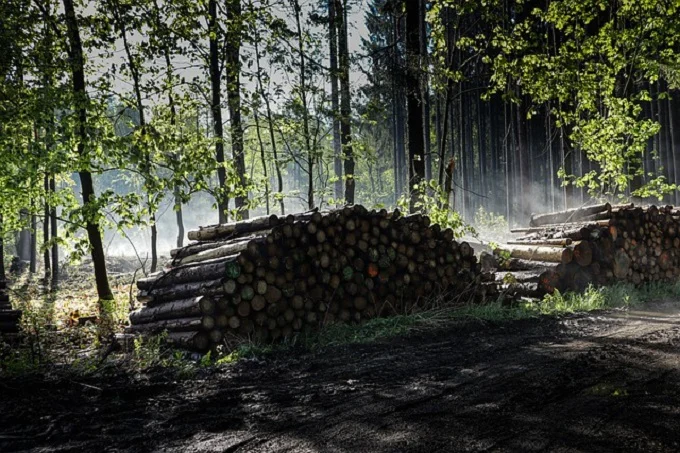6 subtle ways humans are destroying the planet

Many ways to save the planet are just as destructive for it. For example, the transition to electric vehicles seems to make the air in cities cleaner, but this will not reduce emissions into the atmosphere because energy requires fuel and the manufacture of batteries – lead and acid. But at least they are trying to make our world a better place.
You can often hear from conservationists about the dangers of fossil fuels, cars, factories. But little is said about the subtle ways humans are destroying the planet. But they do as much harm as a coal-fired power plant that smokes the sky.
A huge amount of energy is spent on useless things
What can you say about a person who leaves an open window while the air conditioner is running or turns on the oven and does not close the door? Obviously, he has something wrong with his head because he is wasting kilowatts of energy.
But what about the one who leaves a fully charged smartphone on charge? The usual thing, who gets sick from this? Everyone. The fact is that, according to experts, up to 10 percent of the total energy consumption of residential buildings falls on the so-called “vampiric consumers.” These include devices that are in sleep mode or those that, at first glance, practically do not consume energy, like the smartphone already described above on charging.
The fact is that most modern devices do not turn off completely and continue to consume electricity for a quick start. All these invisible leaks, according to experts, lead to an additional 50 billion kilograms of carbon dioxide emissions per year, which is equivalent to 10 million cars.
This figure applies only to low-power consumers, and there are also more voracious devices—for example, open-top refrigerators in supermarkets. Hardly anyone thinks about them, but these devices are forced to work for cooling, wasting energy constantly. If the room is also heated, the costs increase for both cooling and heating. As a result, such inconspicuous waste of energy generates even more electricity and further pollutes the planet.
Love for soft multi-layered toilet paper destroys forests
Remember that nondescript sandpaper-like toilet paper that had an unpleasant gray color? It’s good that it was replaced by soft snow-white paper with flavors, several layers of which do not allow your fingers to dive where they should not be accidental.
If you choose the second option, like most people, then you are involved in an environmental crime. The fact is that that nondescript gray toilet paper is made, as a rule, from recycled materials; that is, you do not need to cut down new trees for it. Snow-white paper is a primary product in most cases; it is not made from conventionally recycled newspapers and cardboard. Moreover, many more raw materials are required for its production because there are two or even three layers in it.
Only a small proportion of toilet paper is made from recycled raw materials, while the vast majority is the primary product. Thousands of hectares of forest are being cut down so you can wipe your ass with soft, apple-scented paper. About the smell: to create such paper, it is also necessary to synthesize flavors in chemical industries, which further pollute the planet. Even after learning this, it is unlikely that humanity will do something to save the planet.
Tons of carbon are released into the air due to carelessness and other reasons
How can we reduce the number of emissions of oil products and substances generated during their combustion? Environmentalists have an answer to this – change to more economical cars, use public transport or a bicycle, and it is better to walk in general. You also need to remember to turn off the light or air conditioner in the rooms if there is no one there and turn off the devices that go into sleep mode.
But all of this doesn’t make much sense if we don’t stop ignoring the little things that we don’t even think about. For example: do you close the gas cap tightly after refueling? Many people forget to do this, and the gasoline starts to evaporate. This does not seem to have any environmental impact, but experts estimate that this results in an estimated 500 million liters of fuel wasted.
But none of that means anything with 4.5 billion liters wasted from driving on under-inflated tires. Another 3 billion liters of fuel is spent on heating cars in winter. All this leads to the release of huge amounts of greenhouse gases. Who knows, maybe it is because of this that the glaciers will melt, which will lead to serious consequences.
Light pollution makes nature change
We are preoccupied with the sensitive topic of air, soil, and water pollution, but we forget about an equally dangerous phenomenon – light pollution. Homes create it, businesses, industries, street lamps, and other objects. Ask any astronomer how far they have to travel from a large city to eliminate the influence of lighting on their observations. Most likely, the figure will be several tens of kilometers.
The problem is that this pollution affects the daily routine of animals accustomed to a certain length of daylight hours. This disrupts their migration patterns, waking and sleeping schedules, and hunting times. It also causes the growth of algae in water bodies since the light scares off the creatures that eat them. This leads to a change in water temperature, as the algae act as a shield.
Lawn care leads humanity to desertification and water scarcity
In developed countries, adjoining lawns and other types of lawns are widespread, each of which must be watered to be pleasing to the eye. What do you think is the area occupied by lawns in the United States? Where did this crop come from? 130 thousand square kilometers. This is three times more than the area of all cornfields in the same country. According to experts, every person has 700 liters of water every day, spent on lawns.
This leads to the rapid depletion of natural water reserves, especially in the southern regions, and to the desertification of the area. As the culture of lawn care is spreading to other countries, including ours, the waste of water only increases. While millions of people on the planet do not have access to clean water, a small percentage of the wealthy spend hundreds of liters to make their lawn look better than a neighbor.
Contraceptives kill fish
Hormonal contraception allows you to have s*x without the consequences of pregnancy by filling your body with synthetic estrogen and progesterone. These hormones prevent ovulation, which prevents a woman from getting pregnant. But once the level of hormones rises in the body, it must get rid of the excess. And he does it with urine. It ends up in the sewer, from where it rushes into the ground, underground or ordinary rivers, or to sewage treatment plants. These sources release hormones into water bodies and then into fish and other sea creatures from all of these sources.
In Canada, an experiment was conducted in which researchers found that although the hormones were not enough to kill the fish, they caused problems in males. Some of them became infertile, which reduced the population.
Another study from the United States showed an increase in the number of fish with both male and female characteristics in the Potomac River. They accounted for up to 80 percent of the general population. Hormones are found in many foods, and when they get into the water, they disrupt the natural balance. This could potentially lead to the extinction of many species.




